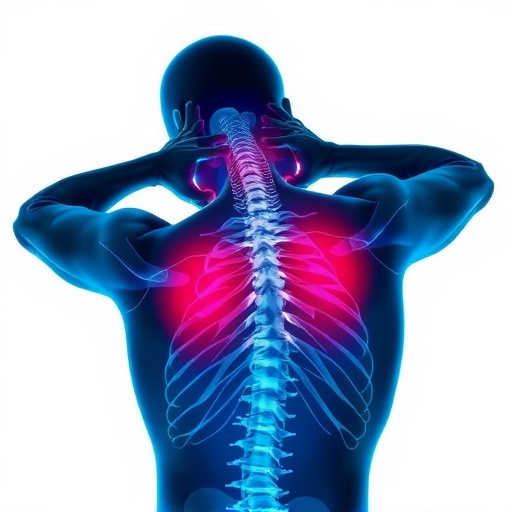Occupational injury treatment programs leverage holistic strategies, integrating physical therapy, occupational therapy, chiropractic care, and cognitive-behavioral techniques to address complex patient needs. By focusing on spinal adjustments, sports injury recovery, and mental health support, these programs offer personalized plans for faster healing, improved mobility, and enhanced well-being. While coordination challenges exist, careful planning, communication, and tailored approaches ensure successful outcomes, enabling patients to return to work with optimized neck pain relief and restored functional abilities.
In the realm of occupational injury treatment, a holistic approach is emerging as a game-changer. This article delves into the benefits and complexities of combining therapies within comprehensive programs designed to aid recovery from work-related injuries. From understanding these specialized treatments to exploring the synergistic effects of multi-modal therapy, we uncover strategies that can revolutionize care for affected individuals. By integrating various therapeutic modalities, healthcare professionals aim to enhance patient outcomes and facilitate a smoother transition back into the workforce.
- Understanding Occupational Injury Treatment Programs
- The Role of Multi-Modal Therapy in Recovery
- Integrating Therapies: Benefits and Challenges
Understanding Occupational Injury Treatment Programs

Occupational injury treatment programs are designed to help individuals recover from work-related injuries and return to their jobs safely. These comprehensive programs typically involve a combination of therapies tailored to address specific needs. By integrating various treatments, such as physical therapy, occupational therapy, and chiropractic care, personalized treatment plans can be created to facilitate faster recovery and improved function.
One key aspect is the emphasis on spinal adjustments to alleviate pain and restore mobility. Additionally, these programs often incorporate strategies for sports injury recovery, ensuring that athletes or manual labor workers receive the necessary support to regain strength and flexibility. The success of occupational injury treatment relies on a collaborative approach between healthcare professionals and the patient, fostering an environment conducive to healing and long-term wellness.
The Role of Multi-Modal Therapy in Recovery

In the realm of occupational injury treatment programs, multi-modal therapy emerges as a game-changer in fostering recovery and enhancing overall wellness care. This integrated approach combines various therapeutic techniques to address the multifaceted needs of individuals post-injury. By intertwining methods like physical therapy, chiropractic adjustments (including spinal adjustments), massage, and cognitive-behavioral therapy, healthcare providers can create a comprehensive healing environment.
The synergy between these modalities offers a holistic solution, tackling not just the physical aspects of recovery but also psychological and emotional well-being. For instance, while spinal adjustments alleviate musculoskeletal issues, complementary treatments like massage therapy reduce pain and improve circulation, promoting faster healing. Additionally, cognitive-behavioral interventions address any mental health challenges that often accompany occupational injuries, ensuring a more balanced and successful recovery journey. This comprehensive strategy ensures that post-injury care is effective and tailored to the unique needs of each patient.
Integrating Therapies: Benefits and Challenges

Combining different therapeutic approaches in occupational injury treatment programs offers a comprehensive and effective way to address complex patient needs. Integrating therapies such as physical therapy, occupational therapy, and sometimes even complementary methods like chiropractic care or acupuncture, can significantly enhance recovery outcomes for individuals suffering from work-related injuries. This multi-faceted approach ensures that each aspect of an individual’s health is considered, promoting not just sciatica relief or back pain relief, but also addressing functional abilities and return-to-work readiness.
While the benefits of integrated therapy are numerous, there are challenges to navigate. Coordination among various therapists and aligning treatment goals can be complex. Ensuring smooth communication and collaboration requires careful planning and a deep understanding of each therapy’s role in the overall program. Additionally, individual patient preferences and responses may vary, necessitating flexibility and adaptability in the treatment plan. Effective integration demands a tailored approach that respects these nuances, ultimately aiming to optimize neck pain relief and facilitate a successful return to work for every patient.
Occupational injury treatment programs that combine therapies offer a holistic approach, significantly enhancing recovery outcomes. By integrating multi-modal treatments, these programs address the physical, psychological, and social aspects of an individual’s well-being, ensuring a more comprehensive and effective healing process. While challenges exist in coordinating different therapeutic methods, the benefits of integrated care—including improved patient satisfaction, faster recovery times, and reduced risk of long-term disabilities—make it a compelling strategy for occupational injury treatment.














